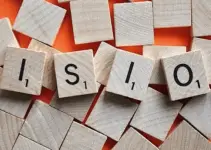The thesis defense is a significant event in a graduate student’s journey towards getting a higher degree. Many students find this occasion daunting. But this need not be an unpleasant experience as there are ways to get rid of that uneasy feeling on that momentous day.
What preparations do you need to make your thesis defense a success? This article describes 10 tips that will give you the confidence that you need and prepare for the thesis defense adequately.
Table of Contents
Know the members of the panel in the thesis defense
If possible, know the members of your panel, their habits, and personalities. It would be great if another graduate student had experience with those panel members to tell you how to respond to their questions.
Anticipate the questions
Anticipate the possible questions related to your study’s objectives, methodology, highlight of results, and conclusions. Write them down the day before the presentation and try your best to answer those questions.
Example Questions
- Why did you undertake your study? What gaps have you identified? (Additional tip: Give updated statistics)
- Why did you choose a particular framework as a guide in your study? What is unique in the conceptual framework that you prepared? What are its strengths and weaknesses (if any)? What are the pieces of evidence or essential indicators in the framework?
- What is the overarching theory that guided your study? (Additional tip: Mention the specific theory and its author)
- Why did you choose a particular model instead of any other model?
- How did you gather the data? (Additional tip: Cite the sources and justification)
- How did you analyze qualitative data obtained through your instruments or data gathering process (e.g. questionnaire, key informant interview, physical measurements)
- How did you ensure the reliability and validity of your data? (Additional tip: remember the triangulation method)
- What is the significant contribution of your study to the body of knowledge?
- What are the strengths and weaknesses of your study? (Additional tip: This refers to the scope and delimitation of your study)
- Why do you think that your thesis is appropriate or relevant to your degree? (Additional tip: refer to your course description
Dress in dark colors
Color is an essential factor of impact. You will appear intelligent and credible if you wear black or similar color. It would help if you looked authoritative as someone who is thoroughly familiar with the topic during the thesis defense.

Get plenty of rest before your presentation
It would help if you looked confident and energetic during the thesis defense. Get enough sleep before the day of the presentation to sustain your energy while facing the panel of examiners.
Highlight the important findings of your study
Use a few (3-5) bulleted short phrases in each slide during the thesis defense. Emphasize the point using a figure, statistics, or graphics that complement the idea [Additional tip: Show updated (with the last three to five years) statistics].
Talk at moderate speed
Make sure that your pacing allows the understanding of your report. See if your audience nods or shows an understanding of your point.
Directly answer the question then expound a little
Don’t beat around the bush. Go straight to the answer. Be honest if the question is not within the scope of your study. State its limitations. There will always be vague areas, but present the contribution of your research. Refer to the scope and delimitations and recommendations of your study. Ask for clarification if the question is not clear. Make sure that you address the issue of the panel.
Be thoroughly familiar with the literature that you have cited
Make sure that you are thoroughly familiar with the literature that you have cited during the thesis defense. Remember the highlights or findings of those studies as well as the limitations.
Be grateful
Don’t forget to thank the members of the panel for their inputs. Also, ensure that you have noted down those inputs.
Always remember the one-to-one correspondence
Ensure that for every objective that you mentioned, you have ready answers or pieces of evidence to show that you fulfilled those objectives. There should be a one-to-one correspondence in the Objectives –> Method –> Results and Discussion (includes corresponding tables or figures for each objective with explanations) –> Conclusion sections. You may prepare a matrix for each objective with the following columns for method, results and discussion, and conclusion/s.
©2020 August 9 P. A. Regoniel



I’m having my thesis defense in an hour and these questions have helped me have something to focus on instead of panicking. Thank you for the tips they are quite helpful
Thanks for the additional tip Ijaye. 🙂
In addition to the effective tips mentioned above, for those who are not used to presenting or talking in front a lot of people, practicing in front of a mirror helps a lot. Recording your voice or taking a video while practicing can also help determine the length of the presentation.